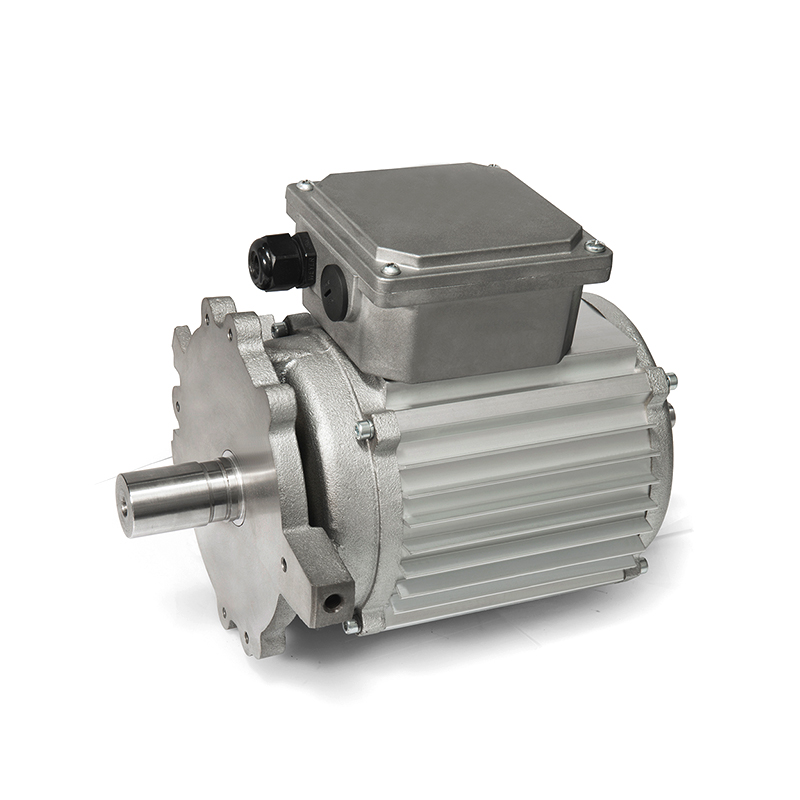How Do Vacuum Pump Motors Contribute to the Efficiency and Reliability of Vacuum Systems?
A vacuum pump motor plays a critical role in the operation of a vacuum pump system, converting electrical energy into mechanical energy to generate the vacuum needed for various industrial and scientific applications. Whether it's in healthcare, manufacturing, or scientific research, vacuum systems powered by efficient motors are crucial for creating controlled environments, removing contaminants, and enhancing performance across numerous industries.
The motor typically consists of an electric motor, mechanical drive components, and a pump unit. Depending on the application, the pump can be designed to handle gases, liquids, or a combination of both, with the motor’s function being central to achieving the desired level of vacuum pressure.
There are several types of vacuum pump motors, each designed for specific needs based on the application, desired performance, and environmental conditions. The main categories of motors include:
AC motors are the most commonly used vacuum pump motors. They are typically more cost-effective, reliable, and easy to maintain. These motors are ideal for applications where high power and consistent performance are needed. AC motors are used in a variety of vacuum systems, from industrial pumps to laboratory equipment.
DC motors offer better speed control and variable output than AC motors. They are often preferred in applications that require fine-tuned performance or need to operate at different speeds. DC motors are commonly used in portable vacuum pumps or in systems where precise control over the motor speed is necessary.
Brushless DC motors are a modern alternative to traditional DC motors. These motors eliminate the need for brushes, reducing friction, wear, and heat generation. This makes them highly efficient, durable, and suitable for environments where high reliability is essential. BLDC motors are widely used in high-performance vacuum pumps for scientific research, medical equipment, and sensitive manufacturing processes.

Stepper motors are used in applications that require precise control of motor positioning and speed. These motors operate by moving in discrete steps, making them suitable for vacuum systems that need fine control over vacuum levels or pressure. Stepper motors are commonly used in laboratory and experimental setups where precision is crucial.
Vacuum pump motors are integral to a variety of industries and applications. Some of the most notable uses include:
Vacuum pump motors are used in medical devices such as suction machines, ventilators, and autoclaves. These pumps help create controlled environments for medical procedures by removing air, moisture, or contaminants. In particular, suction pumps are vital for clearing airways in patients or providing vacuum therapy in wound healing.
Many industrial processes require vacuum systems to function efficiently. Vacuum pump motors are used in applications such as degassing, filtration, packaging, and material handling. For example, vacuum pumps are used in the food packaging industry to seal products by removing air from bags or containers, increasing shelf life.
In scientific research, vacuum systems powered by vacuum pump motors are used for tasks such as distillation, freeze-drying, and sample preparation. High-precision pumps are required in these applications to create low-pressure environments necessary for experiments or to remove contaminants from laboratory spaces.
Vacuum pumps are essential in the semiconductor industry for processes such as ion implantation, etching, and deposition. Vacuum pump motors in these systems help to maintain the ultra-clean environments needed for the production of microchips and electronic components.
Vacuum pump motors are widely used in the packaging industry, particularly for vacuum sealing products in airtight bags or containers. They are also used in the printing industry for holding papers, materials, or films in place during the printing process, reducing movement and ensuring high-quality prints.
Selecting the right vacuum pump motor for your application is crucial to ensuring the efficiency and longevity of the system. There are several factors to consider:
Different applications require different levels of vacuum. It's essential to understand the vacuum level required for your system and choose a motor that can generate the appropriate suction power. This is typically measured in terms of pressure (e.g., inches of mercury, or inHg) or absolute pressure.
The power and speed of the motor directly impact the efficiency of the vacuum pump. Larger, more demanding applications require motors with higher horsepower or torque. Additionally, if precise control of speed is required, a motor with variable speed control may be necessary.
Energy efficiency is an important consideration, especially in large systems or applications running for extended periods. Motors with high efficiency can help reduce operational costs and environmental impact. Brushless DC motors, for example, are known for their superior energy efficiency compared to traditional motors.
Depending on the application, noise and vibration levels may be critical factors. In sensitive environments like medical labs or research facilities, noise reduction is essential. Brushless and stepper motors tend to produce less noise and vibration compared to other types of motors.
The longevity and maintenance needs of a vacuum pump motor are key considerations. Choosing a motor that requires minimal maintenance and is built to withstand the operational demands of your system will help extend the overall life of the pump. Motors with sealed bearings and brushless designs often offer higher durability and reduced maintenance costs.
Ensure that the motor is the right size and compatible with the vacuum pump and other components in your system. Proper motor sizing ensures optimal performance and prevents overheating or excessive wear on the system.
-
Feedback
Hotline:0086-15869193920
Time:0:00 - 24:00


 English
English Deutsch
Deutsch italiano
italiano 中文简体
中文简体












